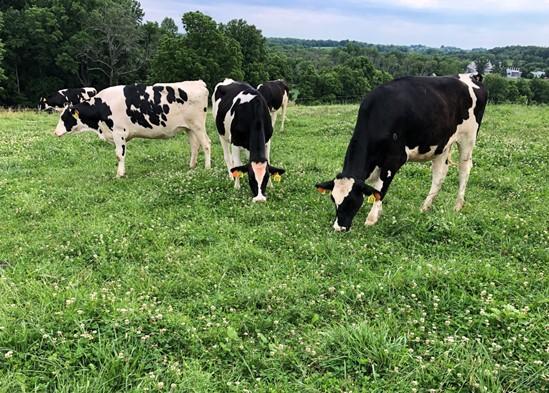Not managing for even forage utilization
Pastures often develop areas with heavy usage and low forage availability, while other areas have less grazing pressure and abundant forage. As a result, the areas that are heavily grazed become more overgrazed while the areas that are left alone are understocked and the remaining forage becomes mature and declines nutritionally. Several management strategies exist to promote more even forage utilization across the field. Making water and shade available in other areas of the field to attract livestock to less desirable areas, mowing or clipping low-use or overgrown areas to keep forages vegetative, and subdividing the field into smaller sections for rotational grazing can all help alleviate this issue and result in greater forage utilization and productivity long-term.
Not investing below the soil surface
Practices like soil sampling and maintaining appropriate soil fertility are an investment but cannot be overlooked. Soil tests are a critical component in pasture management because they are the only way to determine limiting nutrients and soil pH. Soils will naturally become more acidic over time, and if the pH is too low certain nutrients will become less available to plants and toxicities may occur. Liming as needed and keeping up with soil nutrient status are essential investments to the health and productivity of a forage stand. Although it is true that under a pasture setting a large portion of nutrients are retained and recycled through the deposition of manure and urine, consider where those nutrients are being spread. They may not always be deposited evenly across the pasture and are likely more concentrated around water and shade sources or in laneways and other highly trafficked areas. Implementing some form of rotational grazing can help achieve a more even distribution of manure across the pastures and can be used together with any necessary lime or fertilizer to maintain soil fertility and keep forages productive.
Not maintaining flexibility in your operation
Flexibility is key when environmental and growing conditions vary from year to year and season to season. Good managers have to allow for flexibility and adaptive management in grazing systems to achieve desired outcomes. Examples of flexibility include adjusting stocking rates, changing rotational frequency and/or order of rotation, and potentially supplementing pastures with other forage sources as needed. For example, hotter and drier weather during the summer means grass growth rates will slow down and the amount of rest required may be much longer than that required during the spring when rapid growth is occurring; adjust your rotational schedule accordingly by rotating faster when the pastures are growing faster and slower when the pastures are growing slower. Maintaining flexibility in your system will allow you to balance the length of the rest period with the plant growth rate and is fundamental to successful grazing management.
Not keeping good records
With variables like forage growth rate and animal consumption constantly changing from day to day it can be a challenge to balance supply and demand for maximum efficiency. While it does require additional time to complete, putting together a grazing plan and keeping records on things like forage production and the timing of graze/rest periods allows you to more accurately evaluate how things went, assess your goals and limitations, and make plans to adjust for the coming year. A successful grazing plan can also help you be better prepared for weather-related issues and make sure you have enough forage to get you through the grazing season. There are an abundance of planning and monitoring tools available to help you accomplish this, including everything from paper charts to web-based tools to smart phone apps or technologies. If you’re interested and looking for something to get you started, check out one of the free grazing charts available at https://onpasture.com/2021/03/08/get-your-free-2021-grazing-planning-chart-and-instructions-here/
This article appears in the Maryland Milk Moo's March 2021 (Volume 2, Issue 1) newsletter.
Maryland Milk Moo's, March 2021, Vol.2, Issue 1
Maryland Milk Moos is a quarterly newsletter published by the University of Maryland Extension that focuses on dairy topics related to Nutrition and Production, Herd Management, and Forage Production. To subscribe to this newsletter, click the button below to enter your contact information.
Subscribe
